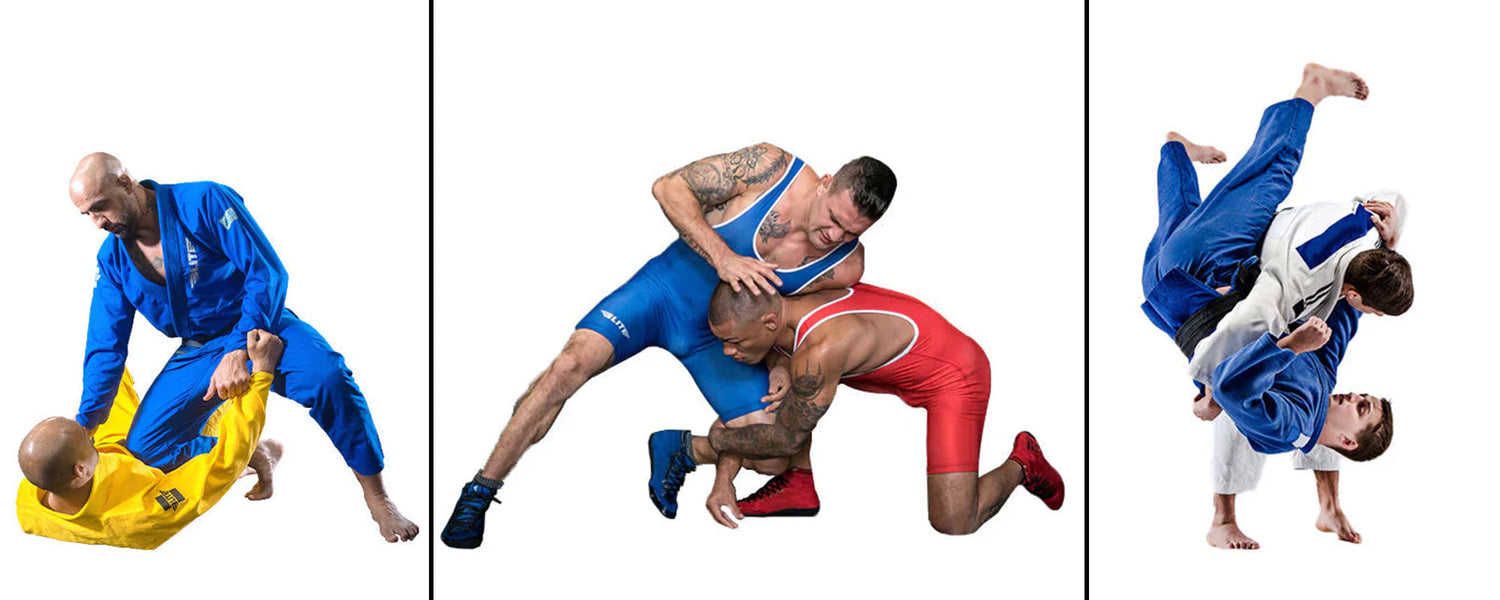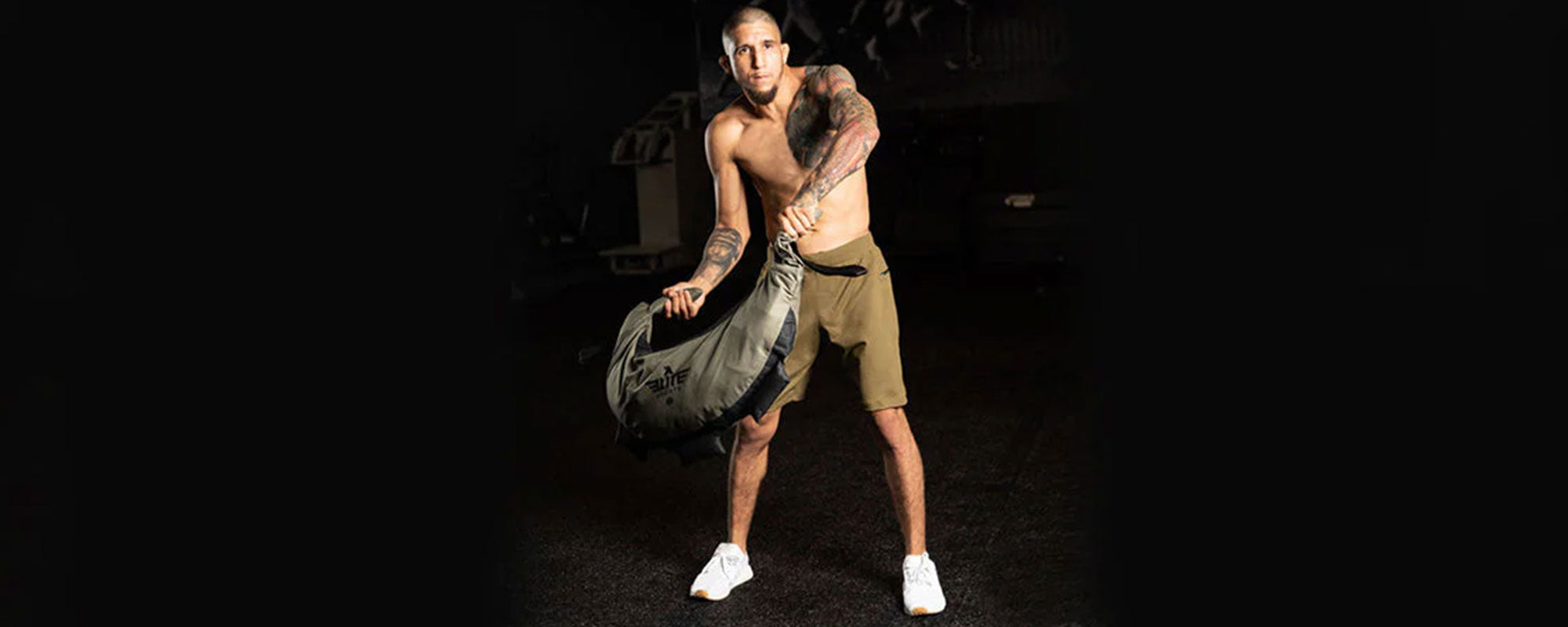Table of content
1. History of Judo, Wrestling, and BJJ
A novice practitioner of martial arts can become confused about choosing among the diverse spectrum of options. Especially, when his mind is captivated with a large number of questions related to the effectiveness, difficulty, and applications of the specific martial art. To decide which martial arts is easier to learn, let's first acquaint ourselves with judo, Wrestling, and BJJ.
1.1. History of Judo
If we go through the pages of history, we will find the Takeuchi-Ru martial art in 1532 which became the foundation of the Japanese form of Ju Jitsu. The word “Judo'' is said to be derived from Ju-Jitsu which means “gentleness, softness or yielding way”. The basic philosophy of Judo was to defend or offend without using any weapon but one's own body.
Ju-Jitsu means the “ arts of science ” and Judo means “ the way of science.”The use of “do” is similar to the word “tao” in Japanese ( which has philosophical overtones). The word “do” shows a road or path to attain mental, physical, emotional, and moral stability. The physical ability of the individual shows the maximum efficiency in daily life which then evolves into “mutual prosperity”. Thus Judo follows a holistic approach to life.
1.2. History of Wrestling
Wrestling has its roots linked with ancient France as observed in cave drawings dating 15,000 years ago. If you search for Babylonian and Egyptian artifacts you will come to know that ancient wrestling techniques are still used by modern-day wrestlers.
In wrestling, a variety of grappling techniques are incorporated including clinch fighting, submission, mounting, takedowns, and joint locks. Wrestling is based on the methodologies to gain a dominant position over the opponent and resist them through your body weight.
Also read: Top 10 Greatest Wrestlers of All Time
1.3. History of BJJ
In the early 1900s, Brazilian Jiu-Jitsu was derived from Japanese Jiu-Jitsu and Judo and it was transformed into a new martial art by its renaissance pioneers. Historians are of the view that the roots of Brazilian Jiu-Jitsu are linked to Buddhist monks some 4000 years ago. From India, it extended its roots to Japan and then transitioned into an effective combat sport. BJJ is an art that has taken the form of a competitive combat sport now.
BJJ focuses on ground-based movements, encapsulated in various techniques of joint locks and submission techniques and executed with perfect timing to dominate the opponents or gain a submission. Brazilian Jiu-Jitsu methodology is joint manipulation and the application of chokes to destabilize the opponent.
2. Differences between Judo, Wrestling, and BJJ?
While deciding which martial arts are easy to learn, let's discuss the three from different aspects.
2.1. Intensity Differences
Which martial art is easier to learn depends upon the different experiences, expectations, preferences, and your body structure and capacity. Many athletes think that stand fighting exhausts the participants as compared to Jiu-Jitsu which is ground-based and it is a sport that offers a big tenure.
Cross-training stories are even different. Some serious critiques and some take everything very lightly and humbly because there are different aspects involved which intervene to affect the performance and training during martial arts.
2.2. Rules Differences
First of all, the big difference between the three martial arts is regarding rules. Rules specify the demands of the sports
Wrestling Rules:

In wrestling, the wrestler is penalized for the second when he is not doing something. But in BJJ, athletes are trained for 5-10 minutes round and work on the takedowns, submissions, and sweeps to handle different scenarios during competitions.
In wrestling, one-minute positional drills are allowed for a certain hold. The wrestler then performs a specific drill with maximum intensity. This clearly depicts the level of intensity differences between BJJ and wrestling. A grappler who excels in kimura or guillotine choke cannot attempt these chokes as they are restricted in wrestling.
Judo Rules:

Likewise, Judo has a different set of rules. It involves gripping and stand-up fights. There are some regulations regarding Judo gripping and positioning. It's against the rules of judo to grab the Judo player from the legs. A Judo player, when comes on the mat, has to leave everything.
You can win the Judo fight by “Ippon” which basically involves: throwing, forcing, and holding.
- Throwing means landing your rival on the back with an enough force
- Forcing your opponent to tap out
- Holding the rival on the ground for twenty seconds
Brazilian Jiu-Jitsu Rules:
Points are attached to attain specific objectives in BJJ or the BJJ athletes win the fights through submissions.

2.3. Belt Level Differences
Judo blackbelt requirements are divided into three parts.
- Nage No Kata (Set of Throws)
- Gokyo (Standing and ground techniques)
- Randori (Techniques and breakfalls)
The Judokans have to show their performance in front of the provincial grading board. They must have scored 120 points. The point accumulation starts from the brown belt rank and its age requirement is 14.
Then judokas have to attain a minimum of 30 points from the practical demonstration in judo-like competitions.
The belt and grading level varies in Judo from country to country. The following are the belts and the order they are graded in judo.

In Brazilian Jiu-Jitsu, regarding belt levels, some quality is assured. No matter from which part of the world you attain your blue or purple or any belt rank. The skills attained and the performance level will be the same.


In Wrestling, there is no belt system. Instead, they are awarded medals.
Occasionally, you will find an interesting or attention-catching ground game in Judo or Wrestling.
2.4. Athletic Kids

It is commonly noticed that Judo and Wrestling are usually followed by children up to five years. They focus on strength and conditioning training programs. The children are required to compete in the Olympic sports thus transforming them into athletic kids. But BJJ takes the training period differently depending upon the coaches and love and passion for training. It can take a maximum of two-three years to reach your required belt division.
BJJ has to offer something interesting, wider, and competitive as compared to Judo and Wrestling.
2.5. Gear Differences

BJJ and Judo have similar uniforms called Gis for the fighters. The Judo uniform is known as “Kimino” and the BJJ uniform is known as “BJJ GI”. The Gi is a sturdy, durable, and thick-weaved uniform that can withstand greater external pressures and movements as compared to the judo uniforms.
There are no colors in Kimono. It is available in white while BJJ gi has three different colors such as white, black, and blue.
For No-gi competitions, the BJJ uniform consists of rash guards and shorts. The no-gi uniform is similar to wrestling. Wrestling uniform called Singlet.
2.6. Self-Defense
Every martial art has some strengths and weaknesses. But we can look for which have minimum weakness and grant more strength to the practitioners with ease to learn.
When we talk about self-defense in martial arts then BJJ is the best choice for close-range combat style as Judo has some limitations and is dependent upon the rules. Judo methodologies are efficient in street fights as compared to BJJ. No Gi BJJ is helpful in street fights. There is no heavy uniform. As 90% of street fights end up on the grounds, BJJ comprises a large number of offensive and defensive techniques as compared to Judo which is a standing fight.
When it comes to sparring and training BJJ and judo, it is more beneficial as compared to wrestling. Its moves are very much practical and can be lethal in most cases. As BJJ trains the practitioner's techniques to neutralize the opponent without hurting them severely or causing serious injuries.
2.7. Older Age and Longevity
Judo and Wrestling are not supportive when it comes to old age and longevity. Wrestling requires lots of strength and in judo, Sutema Waza is hard to perform.
Most individuals preferred to start Judo and Wrestling at a young age because both are effective forms of martial arts for the body and mind. BJJ can be started at any time in life. This aspect makes the BJJ more reliable and effective in martial arts.
3. Which One is Easy To Learn?
After the above discussion, we can say, without any doubt, Brazilian Jiu-Jitsu is easier to learn as compared to Judo and Wrestling. The following reasons can help you to understand why BJJ is easy and beneficial to learn:
- Real-life Fighting System
- Boosts Mental Health
- Anyone at Any Age can Practise it
- Best Base for MMA
- Continuous Self-Building and Improvement
4. Conclusion
As we all know BJJ, Judo and wrestling are three different disciplines of martial arts which enhance fighters physically and mentally whether they are on mats in octagons or their real life.
Judo and Wrestling are part of a standing game, while BJJ is a ground game as most of the fights end on the ground, it would be easier to learn BJJ as Judo and Wrestling require more strength and force while standing as compared to BJJ.
Moreover, BJJ is considered the most suitable and practical option when one has to pursue a career in MMA.
Jiu-Jitsu outperforms judo and wrestling when it comes to variations in techniques and takedowns. Judo is tough to learn and it comprises fewer submission techniques as compared to Brazilian Jiu-Jitsu.
Chokes and locks used in wrestling are somehow similar in BJJ. So, learning Jiu-Jitsu provides a strong base for Judo, Wrestling and then you can easily gain proficiency in MMA.
Photo Credit: @seekpng












Leave a comment
This site is protected by hCaptcha and the hCaptcha Privacy Policy and Terms of Service apply.